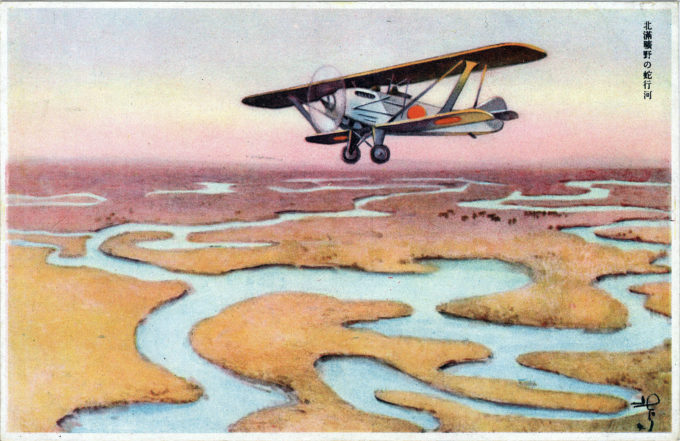See also:
Kawasaki Type 92 Model 1 fighter, c. 1930.
Nakajima Ki-27, “Nate”, 1936-1945.
“The Kawasaki Ki-10 Army Type 95 Fighter was the last biplane fighter used by the Imperial Japanese Army, entering service in 1935, but the first military aircraft wholly designed by a Japanese manufacturer.
“Built by Kawasaki Kōkūki Kōgyō K.K. for the Imperial Japanese Army, it saw combat service in Manchukuo beginning in 1935 and in North China during the early stages of the Second Sino-Japanese War (1937-1945). Its reporting name given by the Allies was ‘Perry’.
“The Ki-10 was designed by Japanese aeronautical engineer Takeo Doi, who had succeeded Richard Vogt as chief designer for Kawasaki. The design was in response to a requirement issued by the Imperial Japanese Army for a new fighter, and was the winner of a competition against Nakajima’s Ki-11. Although the low-wing monoplane offered by Nakajima was more advanced, the Army preferred the more maneuverable biplane offered by Kawasaki.
“The Ki-10 was deployed in Manchukuo (Manchuria) and in the initial campaigns of the Second Sino-Japanese War in northern China. By the time of the Nomonhan Incident (Battles of Khalkhin Gol) with the Soviet Union in 1939, the Ki-10 had become largely obsolete, and was being superseded by the Nakajima Ki-27.
“At the beginning of the Pacific War, the Ki-10 was retired to training and secondary missions, but later returned to front-line service, performing short-range patrol and reconnaissance missions in Japan proper and China in January–February 1942.”
– Wikipedia
Performance
Maximum speed: 400 km/h (250 mph, 220 kn) at 3,000 m (9,843 ft)
Service ceiling: 11,500 m (37,700 ft)
Rate of climb: 16.67 m/s (3,281 ft/min)



